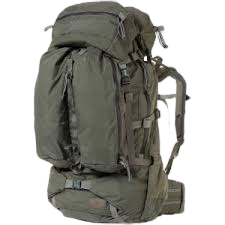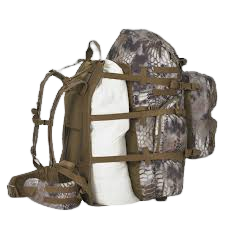The Dynamics of Hunting Packs: A Comprehensive Exploration
Introduction
Hunting packs, a timeless strategy employed by various carnivorous species across the animal kingdom, exemplify the power of collaboration in achieving common goals. This phenomenon is not confined to a specific group or type of animal; rather, it spans a diverse array of species ranging from wolves and lions to killer whales and even certain species of birds. In this comprehensive exploration, we delve into the intricacies of hunting packs, examining their evolutionary significance, behavioral adaptations, and the ecological impact of this collective hunting strategy.
Evolutionary Origins
The concept of hunting in groups has deep evolutionary roots, dating back millions of years. In the animal kingdom, survival is the ultimate driving force, and hunting packs emerged as a highly effective means of securing sustenance. Wolves, often regarded as the quintessential hunting pack species, exemplify the success of this strategy. The evolution of social structures within wolf packs has been crucial to their survival and dominance in various ecosystems.
The advantages of hunting in packs are manifold. By pooling resources and leveraging the strengths of multiple individuals, predators increase their chances of capturing prey. Furthermore, the division of labor within a pack allows for specialization—some members may be adept at tracking, while others excel at the actual pursuit and capture. This synergy provides a significant competitive advantage over solitary hunters.
Behavioral Adaptations in Hunting Packs
The success of hunting packs relies not only on physical prowess but also on intricate behavioral adaptations. Communication plays a pivotal role in coordinating the actions of individuals within the pack. Wolves, for example, employ a sophisticated system of vocalizations, body language, and scent marking to convey information about the location of prey, potential threats, and the overall status of the pack.
Additionally, the establishment of hierarchies within hunting packs contributes to their efficiency. Social structures, often delineated by dominance and submission, facilitate organized cooperation. The alpha, or dominant, members of the pack typically lead the hunting expeditions, making crucial decisions and ensuring the overall cohesion of the group.
Furthermore, the ability to strategize collectively is a hallmark of successful hunting packs. These strategies may involve ambushing prey, encircling it to minimize escape routes, or even coordinating specific roles during a chase. The synchronization of actions is a testament to the advanced cognitive abilities of pack animals.
Notable Examples of Hunting Packs
Wolves
Wolves are perhaps the most iconic example of hunting packs. Their social structure, characterized by an alpha pair leading a group of subordinate members, enables them to hunt large prey such as elk and bison. Wolves are known for their ability to coordinate intricate group movements, often herding prey into advantageous positions before launching a collective attack.
Lion
In the savannas of Africa, lions exhibit a social structure known as a pride. Lionesses, the primary hunters, work together to stalk and ambush prey. The collaborative efforts of a pride increase the likelihood of a successful hunt, with the larger males typically securing the territory and protecting the group.
Killer Whales
Contrary to the land based examples, killer whales, or orcas, showcase the effectiveness of hunting packs in the marine environment. These intelligent and highly social animals employ coordinated strategies to capture prey, often working in unison to create waves that wash seals off ice floes. Different pods of killer whales exhibit distinct hunting techniques, highlighting the cultural transmission of behaviors within these groups.
African Wild Dogs
African wild dogs, also known as painted dogs, form packs with a unique cooperative hunting style. They rely on stamina rather than speed, often pursuing prey over long distances. The pack members take turns leading the chase, ensuring that the targeted prey becomes exhausted and more susceptible to capture.
Ecological Impact of Hunting Packs
The presence of hunting packs in various ecosystems has profound ecological implications. The regulation of prey populations by predators is a fundamental aspect of maintaining ecological balance. Hunting packs contribute to this balance by controlling the populations of herbivores, preventing overgrazing, and mitigating the risk of habitat degradation.
Furthermore, the threat posed by hunting packs can influence the behavior of prey species. The constant pressure from predators has led to the development of various antipredator adaptations in potential prey. These adaptations include heightened vigilance, enhanced speed, and alterations in habitat use, ultimately shaping the dynamics of both predator and prey populations.
Conservation Challenges
While the ecological role of hunting packs is vital, the conservation of these species faces numerous challenges. Habitat loss, human wildlife conflict, and illegal hunting are significant threats to many pack hunting species. The disruption of social structures within these packs can have cascading effects on their ability to hunt, reproduce, and thrive in their natural environments.
Conservation efforts often focus on mitigating these threats, including the establishment of protected areas, community based conservation initiatives, and educational programs to raise awareness about the importance of preserving these apex predators and their ecosystems.
Future Directions: Conservation and Ethical Considerations
As we delve deeper into the dynamics of hunting packs, ethical considerations and conservation efforts come to the forefront.
Ethical Dilemmas
The study of hunting packs raises ethical questions, especially when considering the impact of human activities on these natural systems. Habitat destruction, climate change, and direct human wildlife conflict pose existential threats to many pack hunting species. Ethical considerations involve striking a balance between scientific inquiry, conservation efforts, and respecting the autonomy of these animals in their natural environments.
Conservation Challenges and Solutions
Conservation initiatives must address the unique challenges faced by hunting pack species. This involves preserving natural habitats, minimizing human wildlife conflict, and implementing strategies that ensure the long term viability of these apex predators. Conservation efforts need to be holistic, considering not only the species in question but also the broader ecosystems they inhabit.
Human Analogies: Lessons from Hunting Packs
The cooperative strategies employed by hunting packs offer intriguing parallels to human societies. Lessons can be drawn from these natural alliances that may inform our understanding of teamwork, leadership, and effective communication.
Leadership Dynamics
The hierarchical structures within hunting packs, such as the alpha individuals in wolf packs or the matriarchal leaders in elephant herds, provide insights into leadership dynamics. Leaders play a crucial role in decision making, conflict resolution, and maintaining social order, illustrating the importance of leadership in human organizations.
Communication Strategies
The complex communication systems within hunting packs underscore the significance of effective information exchange. Analogous to human teams, clear and efficient communication is essential for coordinated efforts, whether in a professional setting or during recreational activities.
Technological Advancements and Hunting Packs
In the 21st century, technology has provided new avenues for the study of hunting packs. Advanced tracking devices, satellite imagery, and camera traps enable researchers to observe pack behaviors in unprecedented detail. This technological leap enhances our understanding of hunting pack dynamics, offering insights into their movements, communication patterns, and the ecological impact on their habitats.
GPS Tracking
Researchers equipped with GPS tracking devices can monitor the movements of hunting packs in real time. This technology provides valuable data on hunting territories, migration patterns, and the overall spatial ecology of pack based predators. It also helps conservationists identify key areas for habitat protection.
Camera Traps
Camera traps offer a non intrusive method for observing hunting packs in their natural habitats. These devices capture images or videos triggered by motion, providing researchers with glimpses into the daily lives of pack animals. This technology has been particularly useful in studying elusive and nocturnal species.
Conclusion
Hunting packs represent a remarkable adaptation that has evolved independently across diverse taxa. From the howling packs of wolves roaming the vast tundra to the stealthy prides of lions patrolling the African savanna, the collaborative efforts of these predators have shaped ecosystems for millions of years.
Understanding the intricate dynamics of hunting packs provides valuable insights into the complexities of predator prey interactions, social structures, and the delicate balance that sustains life on Earth. As we navigate an era of increasing environmental challenges, the preservation of these apex predators and their ecosystems becomes not only a matter of ecological significance but also a testament to our commitment to maintaining the rich tapestry of biodiversity on our planet.


























